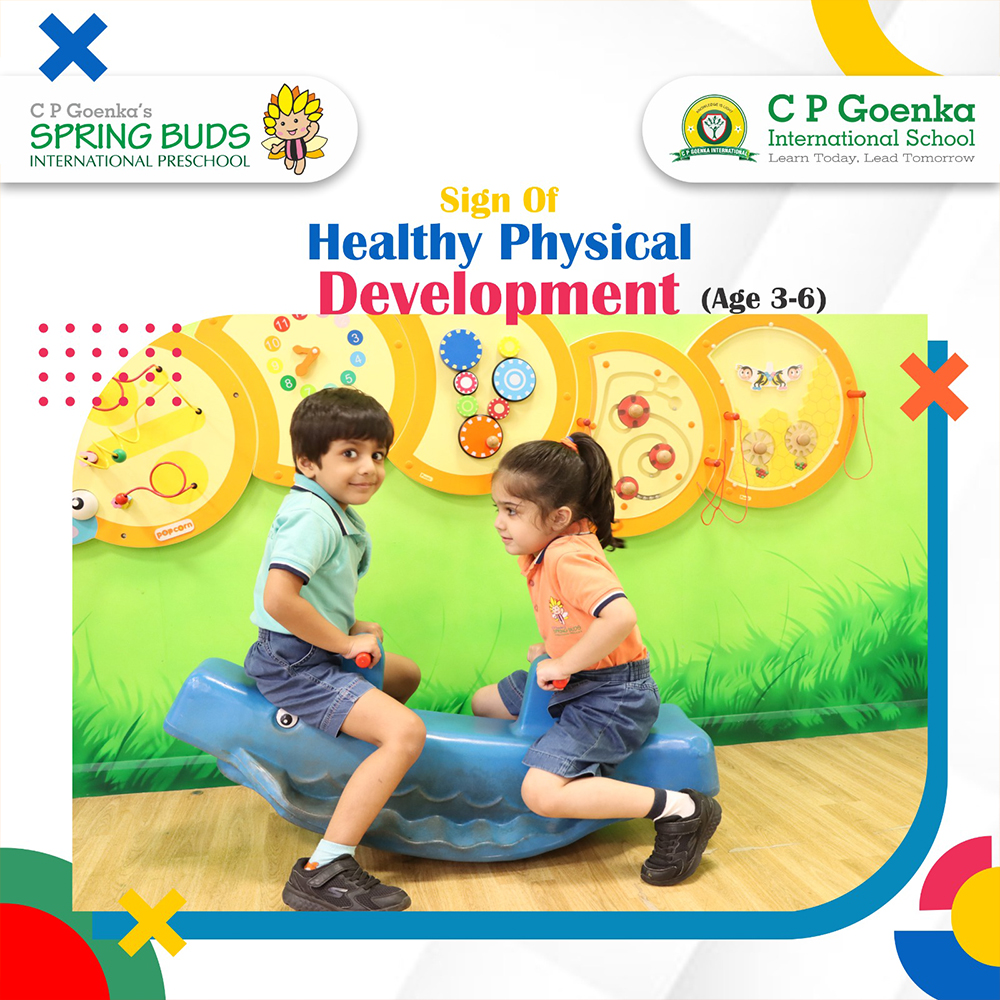Signs of Healthy Physical Development (Ages 3-6)
Rapid Development marks the first two years of a child's life, but growth slows significantly afterward. When a child's eating habits suddenly shift, parents may begin to worry about the child's health and Development.
Infants experience multiple growth spurts as they mature physically. After the child's growth spurts, they will continue to develop normally and steadily until puberty. Closely monitoring and tracking your child's growth is the best method to tell if he is developing normally. You can send your kid to the Best Play School at this age.

Physical Development in a Child
Some of the most obvious indicators of a child's progress in physical maturity include:
Limbs
The child's limbs will develop in a way that makes them proportional to their torso and head. You'll also see that your child is noticeably leaner than he was as an infant.
Muscle Development
The Development of the child's muscles will be accelerated to facilitate their mobility. Muscles in the arms and legs, typically much larger than those in the toes and fingers, will develop more rapidly. Fueling your child's growth with the right foods at this age is critical.
Growth of the Brain
As your child's brain matures, they can handle more challenging mental and physical activities. Neural fiber development is very robust in the prefrontal cortex during infancy and early childhood. The human brain is estimated to be 70% of its full size by the time a child reaches 2. At around six or seven years old, the brain has already reached nearly 90% of its eventual adult size. This maturation is likely attributable to the enhancement of motor capabilities. The rate of brain development can also be estimated by measuring the head's diameter. You can send them to the Best Play School this age.
Height
By 12 months, an infant has typically reached half their birth length. At five, a child should ideally be twice as tall as at birth. Furthermore, at roughly 24 months of age, boys are half their adult height, and girls are half their adult height at around 19 months of age.
Weight
A baby's weight at one year old is typically three times that at birth. After the first year, his growth slows down, but he'll still gain about 2 kilograms every year until he's six.
Teeth
Your kid will likely have lower front teeth from five to nine months of age. Upper front teeth typically erupt between the ages of 8 and 12 months. By the time a child is two and a half years old, they will normally have all twenty primary (deciduous) teeth. Between the ages of 5 and 13, children usually get their first set of permanent teeth.
Physical maturation stages
Children typically progress through the following stages of physical Development:
- • Baby can roll over, sit up, and hold their head up by nine months.
- • Children between the ages of two and four learn to walk, run, jump, build with blocks, and manipulate crayons;
- • Between the ages of four and six, they can independently climb stairs, write, and clothe themselves.
Conclusion
Preschoolers (children aged 3 to 6) go through a joyful period of physical growth. Children's ability to express their feelings throughout this stage improves over infancy. A nutritious, well-balanced diet is essential for children's physical Development since it promotes strong muscle and bone growth.



